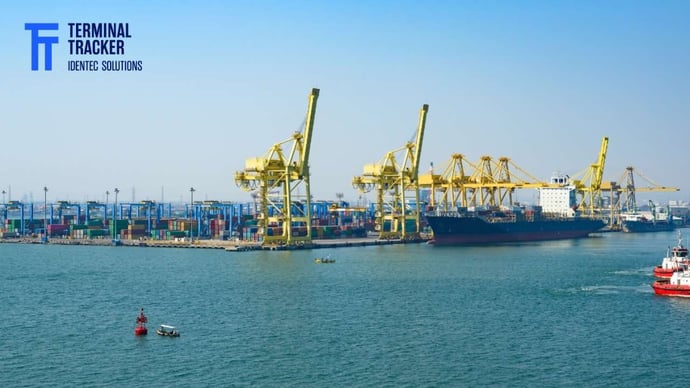The Benefits of a Position Detection System
| Written by Mark Buzinkay
As container terminals are a vital part of the global economy, handling a huge amount of trade every day is an essential task. In order to keep up with demand, container terminals have to operate efficiently and safely. A position detection system can help automate the container handling process, making it safer and more efficient.

No video selected
Select a video type in the sidebar.
There are many benefits to automating the process of container handling at ports. Automation can help improve the efficiency of port operations and reduce the risk of delays and accidents. By tracking the movement of containers within the port area, automation can help to ensure that they are handled safely and efficiently. This ultimately helps to improve the flow of goods within the entire supply chain in general, in the port in particular.
One of the most beneficial areas of container terminal operations for automation is yard operations. The primary benefit of automated yard planning is increased efficiency in container handling operations. Yard planners can reduce congestion and improve asset utilisation by automating the process of stacking containers. Additionally, automated horizontal movement systems can improve throughput by reducing containers' need for manual handling. Automated Stacking Cranes (ASCs) can also help to optimise container placement within the terminal, and accurate container position determination through sensors can enable quick retrieval of containers when needed. Ultimately, these automation technologies can help improve freight terminals' efficiency and competitiveness.
A position detection system uses sensors to track the positions of objects in an area. This information can then be used to help guide the movement of containers within the port. By knowing the precise location of each container, the port can operate more efficiently and avoid delays.
Port automation with PDS - a global picture
Position detection systems can use various types of sensors, including radar, lasers, RFID, and ultrasonic sensors. These systems can be used to track both stationary and moving objects. Hundreds or even thousands of containers in a busy container port may be moving around at any given time. An effective and reliable position detection system can help keep track of all of them and ensure that they are moved safely and efficiently.
Position detection systems use different concepts on how to keep track of all moving containers. A clever way to do this is to follow the movement of container handling equipment and combine their position and actions with the current container. The yard's container positions database remains accurate and reliable by sharing and storing this information with the Terminal Operating System (TOS). An accurate database is a prerequisite to executing work orders efficiently.
Some of the reasons that motivate the automation of container terminals are:
- The appearance of mega-ships with a capacity of up to 24,000 TEU. Ports, confronted with extreme demand peaks, mitigate the operational stress with automated, streamlined logistics chains.
- When a terminal is limited in geographical expansion. In these cases, automation is a key strategy for improving performance, streamlining processes and increasing competitiveness.
- Automation is essential to increase the performance and efficiency of movements if a terminal is operating as a transhipment hub (e.g. ports of Singapore).
- The better (read: efficient, reliable and robust) terminals are, the more they attract clients.
Takeaway
A position detection system can be used to automate the process of container handling at ports. This helps improve operational efficiency and reduce the risk of delays and accidents. The position detection system tracks the movement of containers within the port area in order to ensure that they are handled safely and efficiently. Ultimately, this helps to improve the flow of goods within the supply chain, saving energy and reducing pollution and port congestion.



